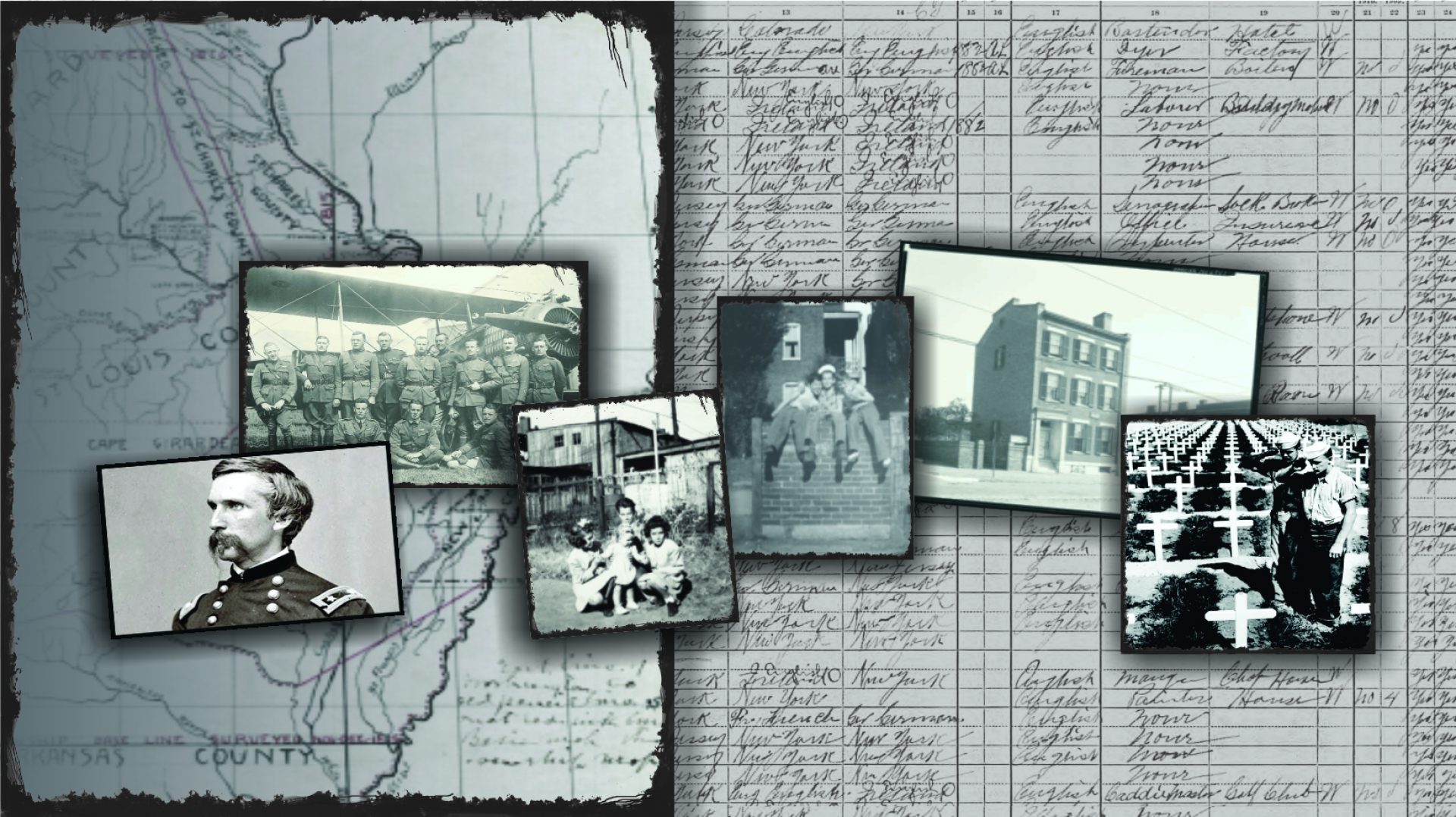This post describes a number of exciting possibilities for using military records for genealogical research of your family history. Explore examples of documents retrieved from archived military service records that can shed light on your ancestors’ past and lead to yet more tantalizing clues as you embark on your genealogical quest. Let’s get a sense of what you can expect to find when you use military records to research a military ancestor.
NAMES, NAME CHANGES AND OFFICIAL DOCUMENTS IN SERVICE RECORDS

In this letter, the father of the veteran informs the Army that his son ‘must have added the initial J’ to his name. The Armed Forces spent a great deal of effort collecting and verifying family information, including correct spellings. Military service file information can help explain name discrepancies and confirm alternate spellings.
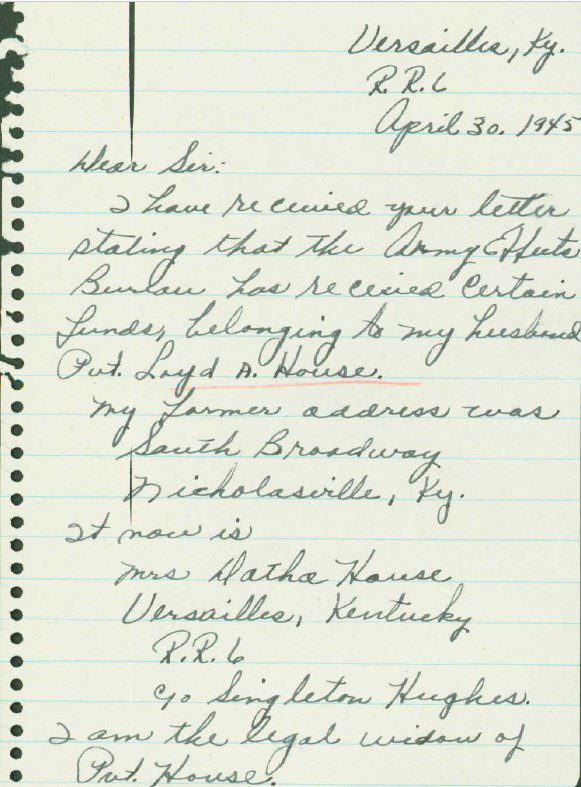
In one letter, a widow gives her former address, a new address, and mentions the name of someone she can receive mail ‘in care of’. That name could potentially be a clue to her birth family or to a future husband, and the locations noted can help to pick up the trail of a female ancestor.
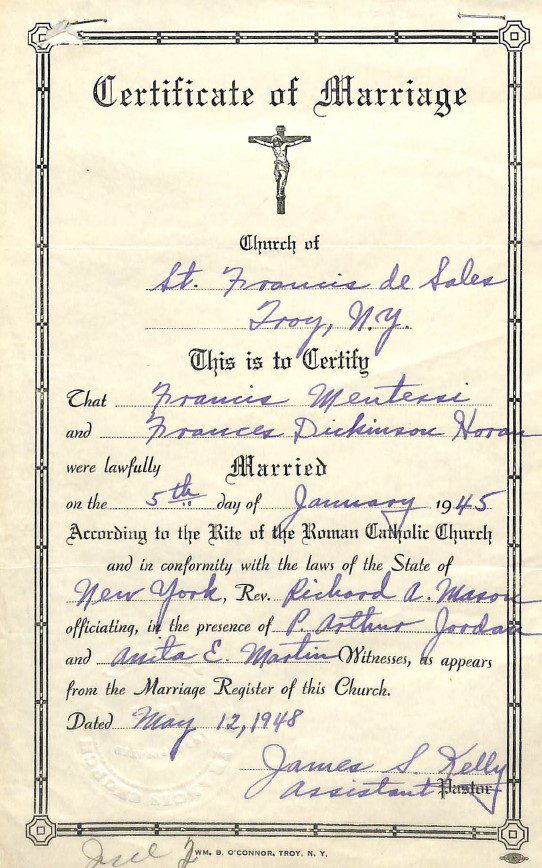
This official certification of a marriage was filed with the Army to prove that a widow had remarried and forfeited her Next of Kin rights to make burial decisions for her deceased husband. It offers her maiden name, deceased husband’s last name and her new spouse’s name all on a single document that can otherwise be difficult to locate in civil or religious archives. These certificates are frequently found in both military personnel files and IDPF files to support beneficiary claims.

Like other vital certificates, certified death certificates for family members are often found inside military service files. Filed to clarify beneficiary status, these certificates are among the most valuable documents for genealogical research.

Female ancestors are more difficult to track, since the majority who married followed the custom of taking a spouse’s surname. In the absence of a marriage record or newspaper announcement, information on married female relatives can be found in military service records. This letter from a woman regarding her deceased cousin’s belongings is a gold mine, giving the married names of two female cousins of the fallen serviceman. The Report of Death gives the married names of two sisters, and mentions a wife found in later records.
INFORMATION ON SIBLINGS IN SERVICE RECORDS

Service records often mention other siblings also in service. This memo is part of an IDPF file, and gives details regarding a brother who was killed in action. The hospital letter from a wounded soldier connects two brothers bearing different last names, as the wounded man handles the disposition of his deceased brother’s effects. This type of information is frequently found in military service records.
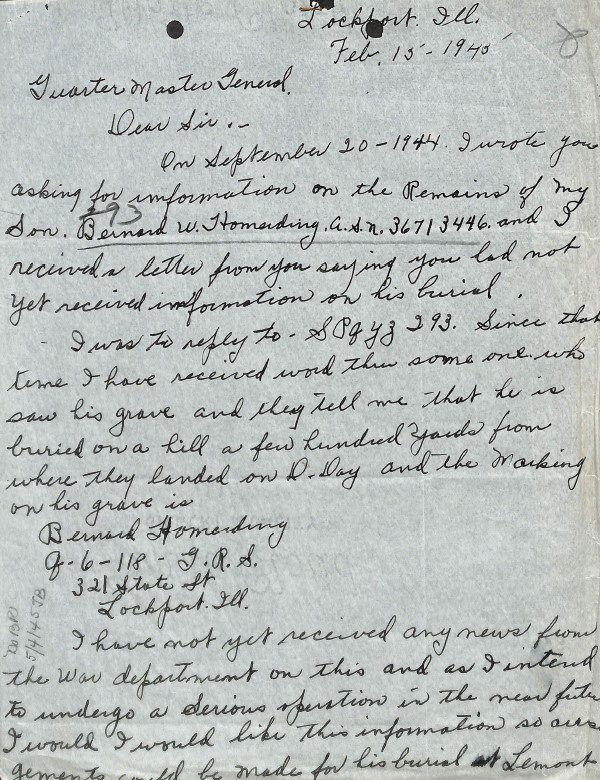
This original handwritten letter from a mother describes her choice for her son’s final resting place as a cemetery lot she owns with ‘two little girls buried there’.
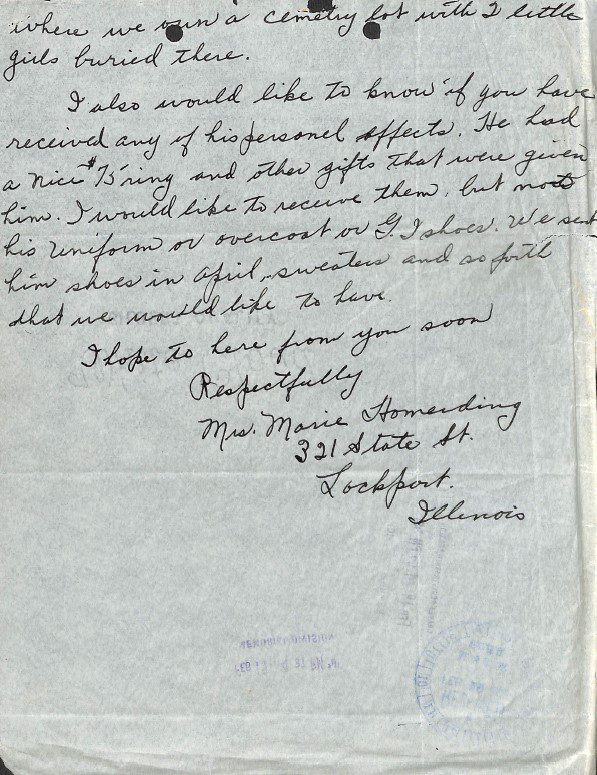
In a time period when the deaths of children and stillborn babies were still sometimes handled privately by the family a letter like this can shed light on children who abruptly disappear from other official records. The transcription contained in the file allowed for rapid inspection and reply at the time, but today it helps to decipher handwriting.
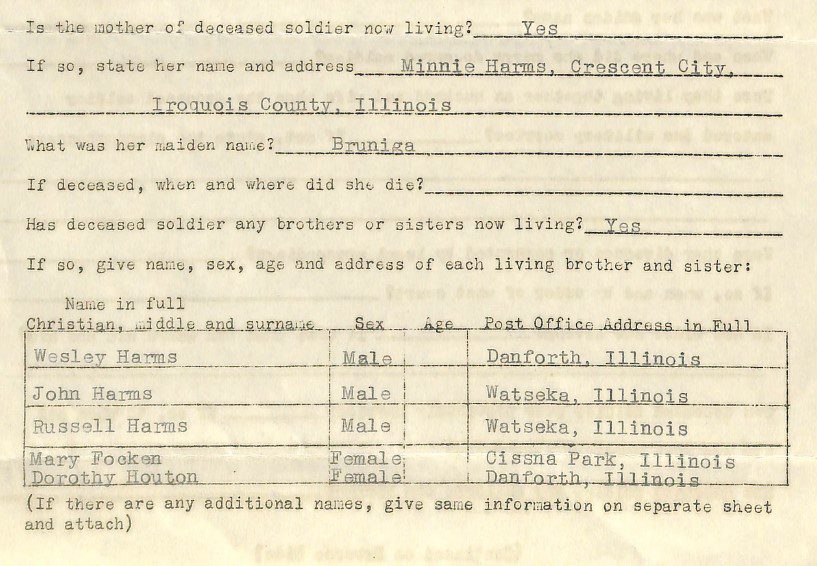
As part of the effort to determine the person with the legal right to the remains of the fallen, the Army followed strict rules. Information was collected on the widow, father, mother, male and female siblings by age to award responsibility for personal effects, burial details, and correspondence. Since some remains took years to recover and identify, the designated person could change as widows remarried and parents passed on. Families sometimes battled amongst themselves for these rights, and family dynamics are detailed in correspondence. On this informational form five siblings of the deceased soldier are listed, complete with the married names of sisters. Military records often provide concise death information on immediate family members of the serviceperson as well.
FAMILY MYSTERIES AND DETAILS

This Record of Custodial Transfer illustrates the problem of differing date formats over time. This is a sheet found in most IDPF files used to document responsibility for the movement of a soldier’s remains to a final resting place. Reading closely, the soldier’s body left the Saint James US Military Cemetery overseas on 27 Aug 48. The following transfer of custody is expressed as 1/9/48, and the third transfer as 25/9/48.To the modern eye, 1/9/48 would read as January 9 of 1948. On this document, it means September 1 of 1948, matching neatly with the clearer dates shown. This D/M/Y format was not uncommon during the earlier years of the twentieth century and lends itself to date confusion for some events. Military records contain many verifiable dates which can help to sort out family timelines found in other sources.
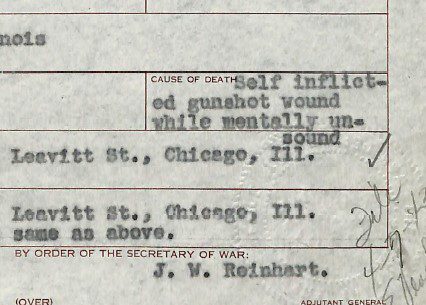
This section of an Army Report of Death record reports a ‘Self inflicted gunshot wound while mentally unsound’ as the serviceperson’s Cause of Death. Official record notations like these can serve to clarify family tragedies, since painful details are often omitted from other sources.
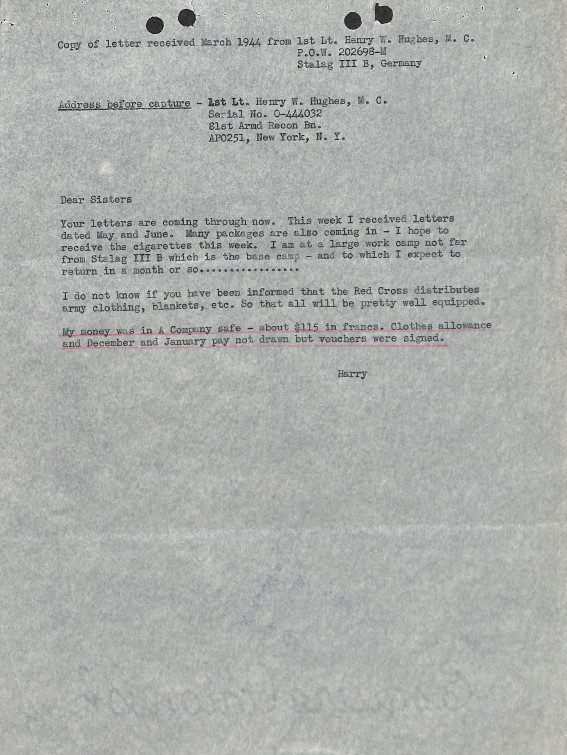
While rare, this dated letter from a Prisoner of War to his sisters gives his POW number and the name of the camp he was held in, allowing for truly accurate research into his experiences as a prisoner.
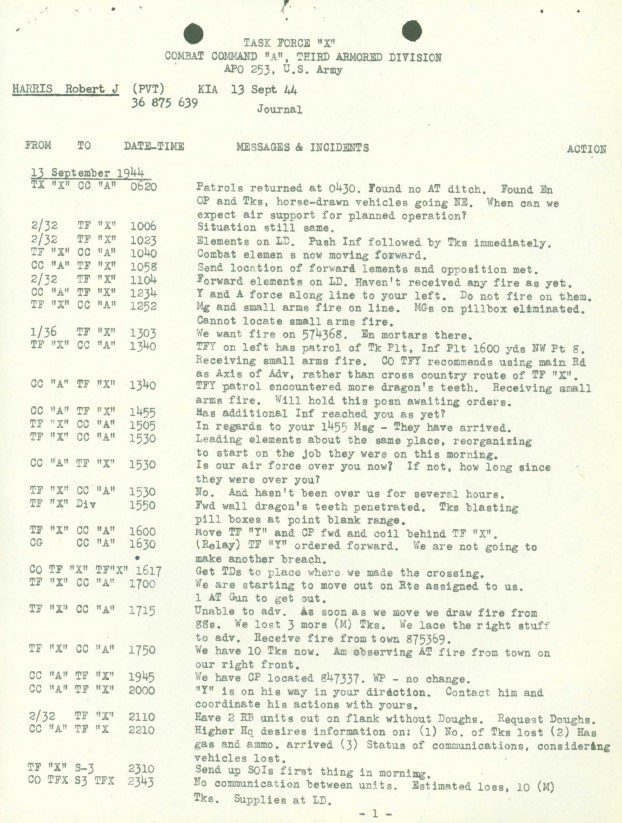
Portions of unit records are sometimes found inside individual service files. This transcript of communications from the Combat Command of the 3rd Armored Division was used several years after the war ended to help locate and identify the remains of a tank crew member killed in action. It also provides a highly detailed account of the battle in which he lost his life. Unit records are invaluable in completing the full story of military service.
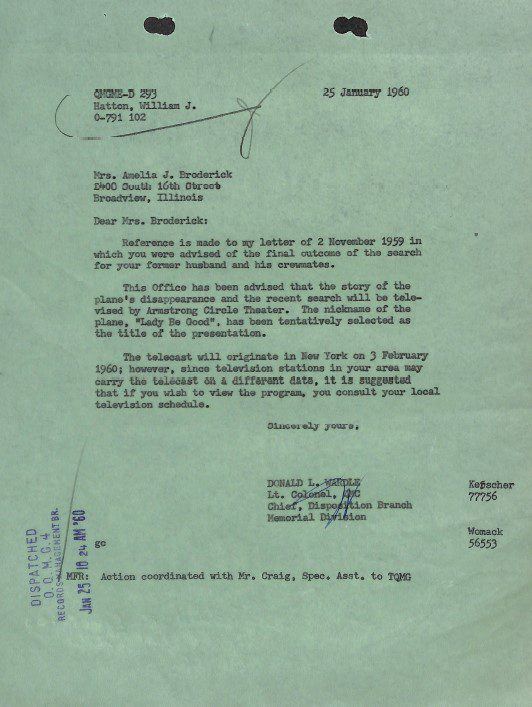
Military records contain a variety of clues which can lead to fantastic genealogical finds. In the case of this letter from an IDPF file containing family correspondence, the Army informed the family that a commercial documentary film about the loss of their veteran’s plane crew in WWII was made in 1960. There is a vast amount of film and photographic material produced by the Army Signal Corps which offers a modern researcher an opportunity to literally see their veteran’s service units and conditions by using the information in military service files to narrow the search.
Ancestor Medical Recods
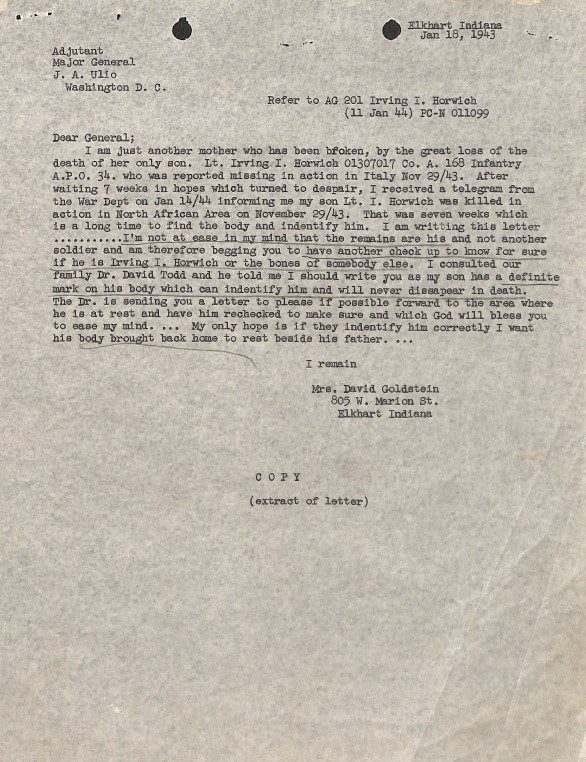
In this letter, a grieving mother mentions the name of the family doctor. Medical records are among the most difficult genealogical records to find for several reasons. Privacy laws, practical record destruction schedules, and closures of medical facilities are tough obstacles. A letter like this offers a definitive starting point for a medical record search.
RELIGIOUS INFORMATION
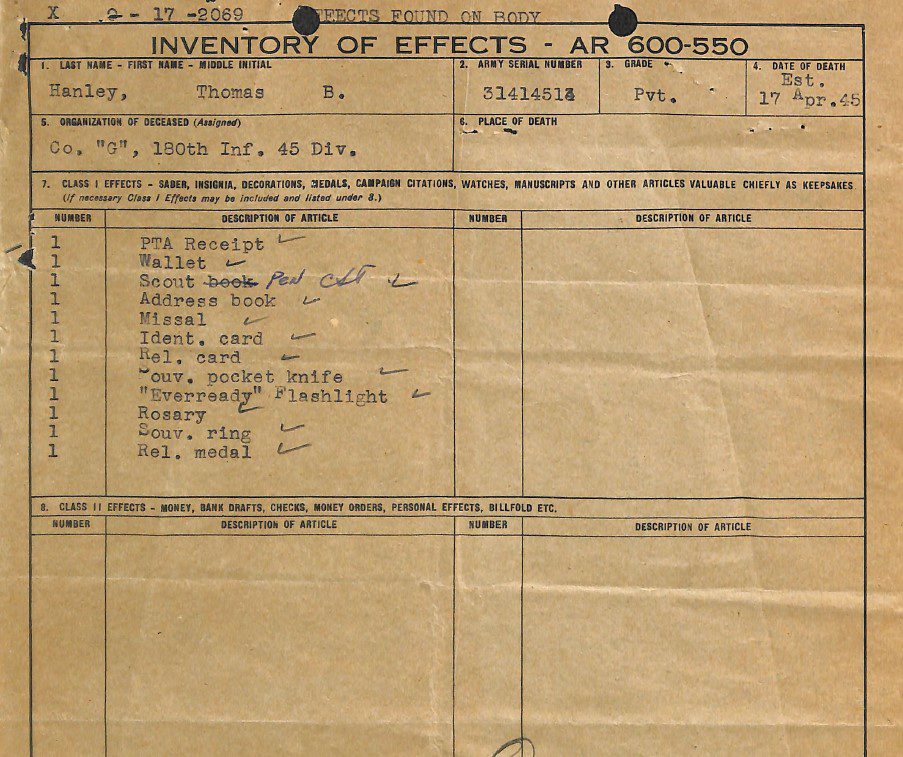
Records maintained by churches and religious organizations are vital sources for genealogical information, but it can be difficult to narrow down the best place to search for them. While the military was strictly non-denominational, accommodation was provided for the religious beliefs of individual service members. Information on religious preferences can be found throughout military personnel and Chaplain’s files. This inventory of the effects of a deceased soldier lists a rosary and a missal, two articles most closely associated with a Catholic faith.
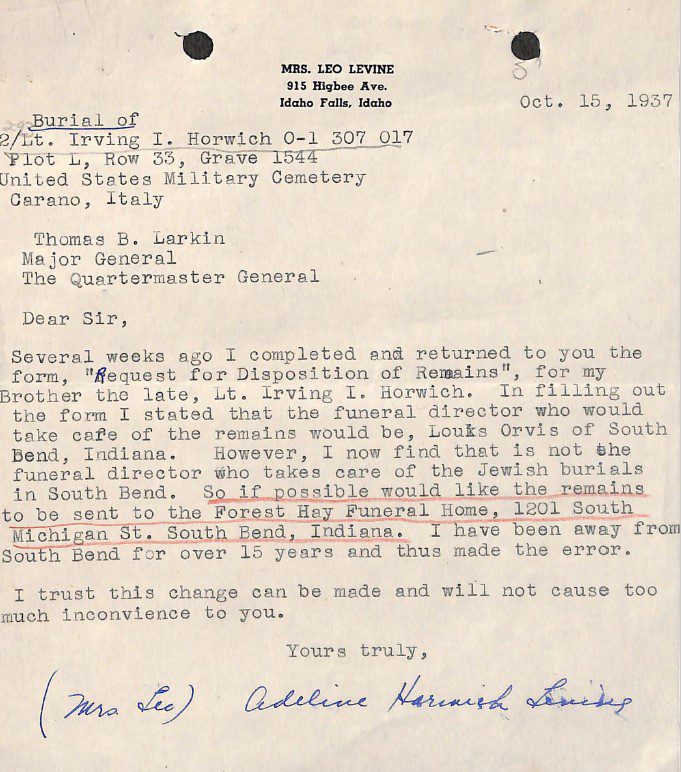
This letter requests that the remains of a Jewish soldier be redirected to a funeral home which handled Jewish burials. In just a few short lines, this letter provides very specific information on funeral homes in the area, which can lead to death and burial information for other family members.
Start Your Family History Research Today
Do you need help with your family’s history genealogy project? If so, drop us a line and we will send you a price quote. It would be our absolute pleasure to help you to uncover the mysteries surrounding your family’s military heritage!
[contact-form-7 id=”4875″ title=”GENEALOGY RESEARCH REQUEST”]